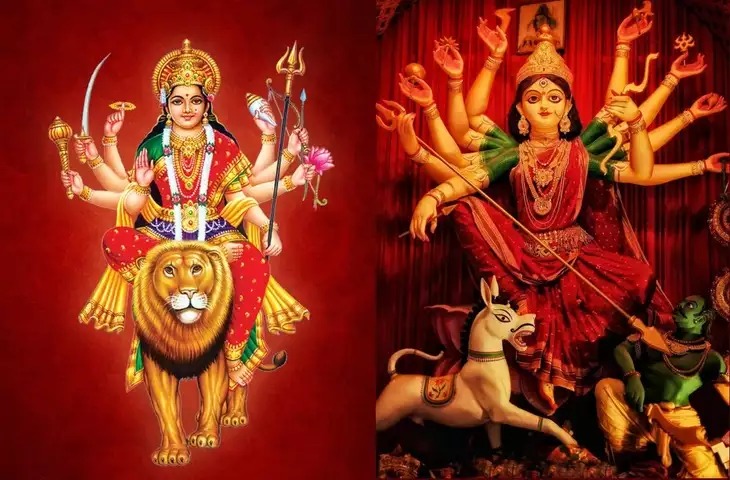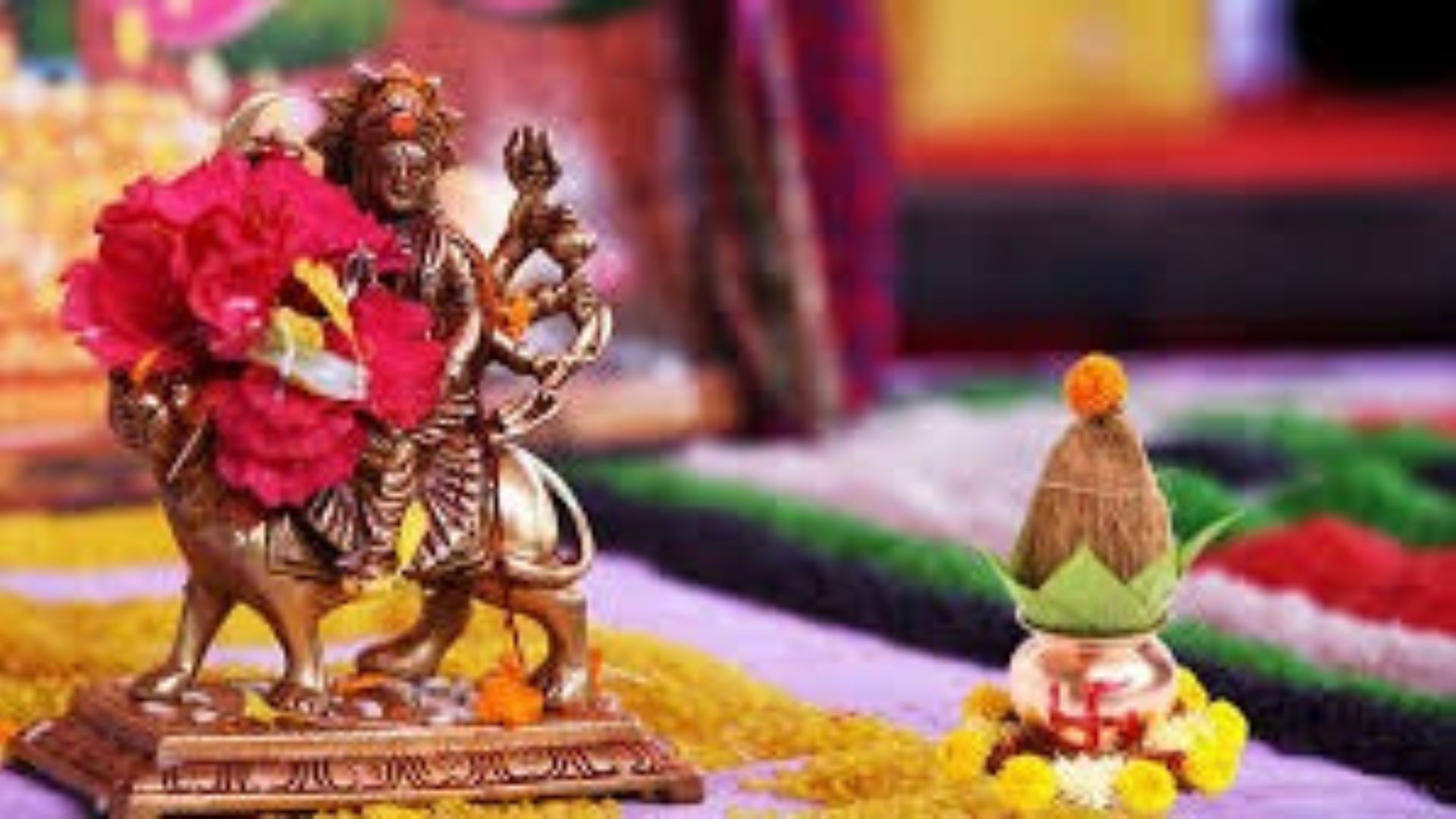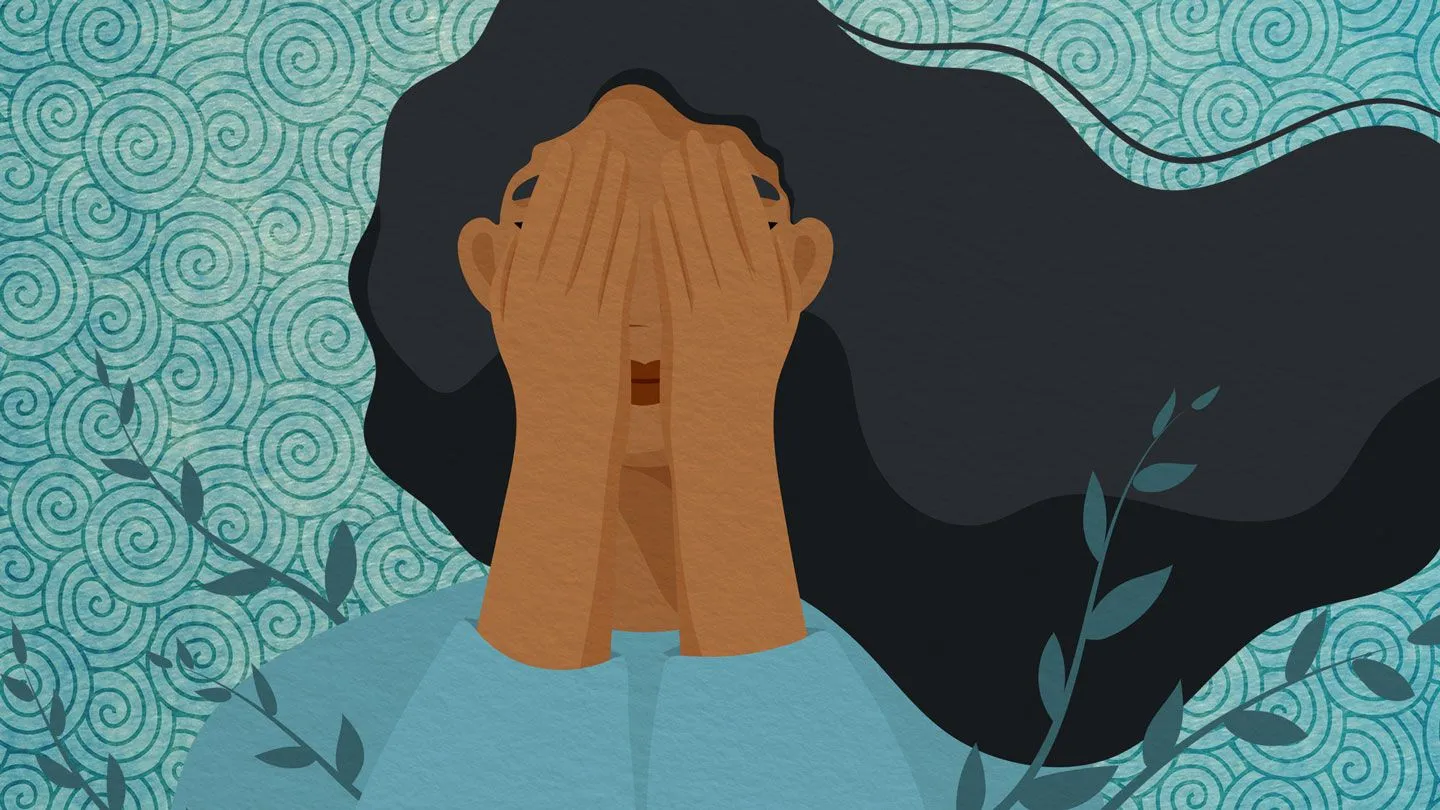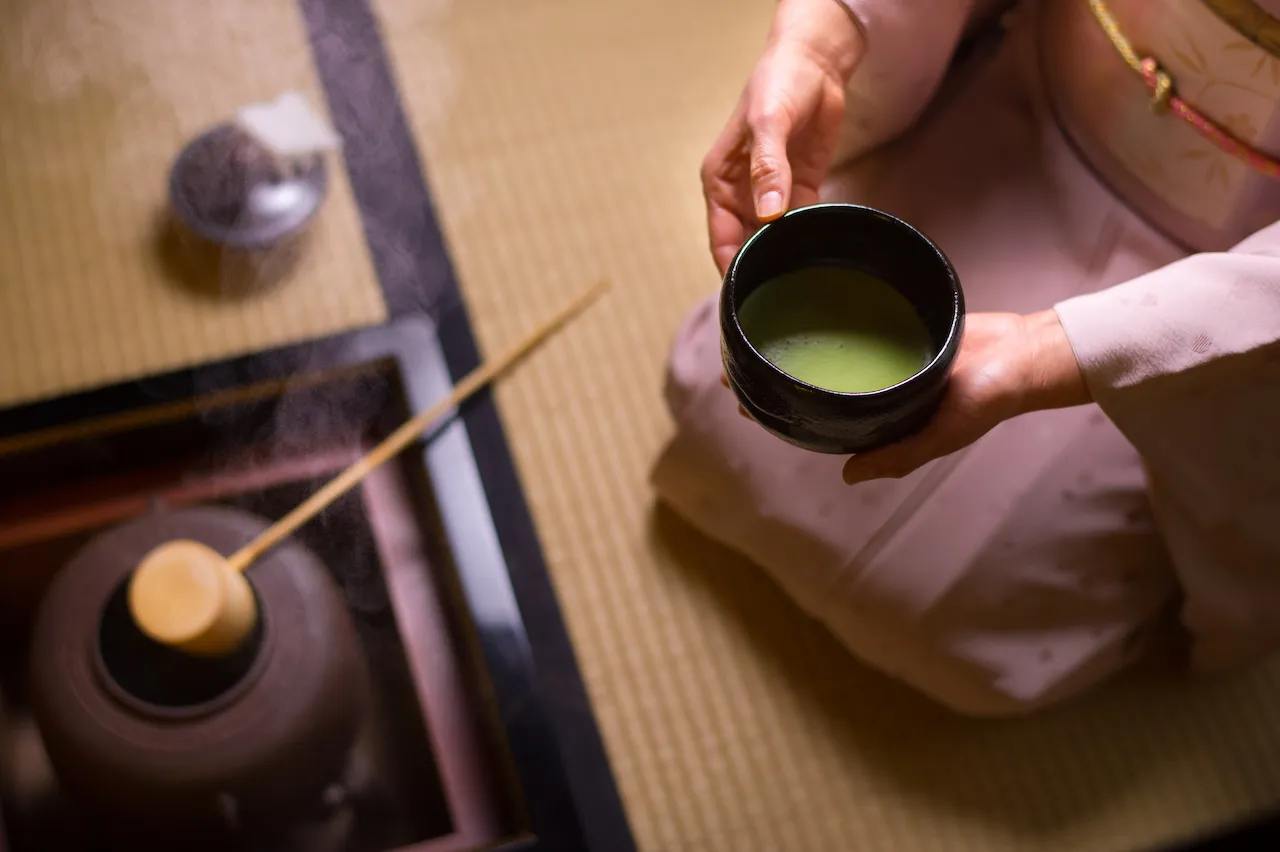Navratri, one of the most revered Hindu festivals, spans nine nights and is celebrated across India with great devotion. The festival honors the goddess Durga in her nine forms and represents the triumph of good over evil. Among these nine days, *Ashtami* (the eighth day) and *Navami* (the ninth day) hold special significance. These days are often marked by rituals like *Kanya Puja* (also known as Kanya Bhojan or Kanya Jaiman), which involves worshipping young girls, symbolizing the nine forms of Durga.
Significance of Ashtami (Durga Ashtami)
Devotion to Goddess Mahagauri
Ashtami is dedicated to Goddess Mahagauri, the eighth form of Goddess Durga.
Mahagauri symbolizes purity, serenity, and wisdom. According to legend, after intense penance, Goddess Parvati’s complexion became dark, but Lord Shiva bathed her in the waters of the Ganga, giving her a radiant white appearance.
Mahagauri’s worship on Ashtami is believed to purify devotees of their sins, granting them inner peace and spiritual growth.
Auspicious Day to observe Fast
On Durga Ashtami, many devotees observe a fast to please the goddess. Fasting is considered a way to purify the body and mind, bringing one closer to divinity. Special prayers and rituals are performed in homes and temples to honor Goddess Mahagauri. Worshipping her on Ashtami is believed to remove obstacles and ensure prosperity.
End of Demonic Forces
Durga Ashtami also commemorates the fierce battle between Goddess Durga and the demon Mahishasura. According to the Durga Saptashati, a significant portion of the battle took place on Ashtami. The goddess, in her fierce forms, destroyed many demons, laying the groundwork for Mahishasura’s final defeat. As such, Ashtami symbolizes the ultimate victory of good over evil.
Chanting of Durga Saptashati
On this day, many devotees recite or listen to the Durga Saptashati, a sacred text that narrates the stories of the goddess’s battles against various demons. The chanting of these verses is believed to invoke the protective energy of the goddess, safeguarding the devotee from negativity and harm.
Importance of Navami (Maha Navami)
Devotion to Goddess Siddhidatri
Navami is the last day of Navratri and is dedicated to Goddess Siddhidatri, the ninth and final form of Durga. She is believed to grant siddhis (spiritual powers) to her devotees. Siddhidatri is a manifestation of divine wisdom and knowledge. By worshipping her, devotees seek her blessings for spiritual enlightenment and fulfillment of their desires.
Culmination of Navratri
Maha Navami marks the climax of the nine-day festival of Navratri. It signifies the end of the goddess’s battle against the forces of evil. The day is seen as a culmination of the spiritual journey that devotees embark upon during Navratri. On this day, the goddess is believed to have destroyed Mahishasura, symbolizing the triumph of truth and righteousness.
Performance of Yajnas and Ritual
On Navami, special *yajnas* (fire rituals) and prayers are conducted to invoke the blessings of the goddess for health, wealth, and spiritual prosperity. The recitation of mantras and hymns during the yajna purifies the atmosphere and the minds of the devotees. Many temples organize grand celebrations, including the reenactment of the slaying of Mahishasura.
Cultural Celebrations
In several parts of India, particularly in Bengal, Navami is a day of feasting and joy. Large pandals (temporary shrines) are erected, and processions take place, showcasing beautifully crafted idols of the goddess. The air is filled with devotion as people come together to offer their prayers and celebrate the final victory of Durga over evil.
The Significance of Kanya Puja (Kanya Bhojan)
Worshipping the Manifestation of the Goddess
One of the most prominent rituals observed on Ashtami or Navami is Kanya Puja (also called Kanya Jaiman or Kanya Bhojan). This ritual involves worshipping young girls (typically between the ages of 2 to 10) who represent the nine forms of Goddess Durga. The girls, known as Kumaris, are seen as pure manifestations of the goddess herself.
During Kanya Puja, the young girls are invited into the home, their feet are washed, and they are offered special food, clothes, and gifts. This ritual symbolizes the honoring of feminine energy and divinity. The Kumaris are seen as bearers of the goddess’s power, and worshipping them is believed to please Goddess Durga.
The Symbolism of Feminine Power (Shakti)
Kanya Puja celebrates the power and importance of the feminine divine in Hinduism. The goddess Durga, who embodies Shakti (the divine feminine energy), manifests herself in many forms, each representing a unique aspect of creation, preservation, and destruction. Worshipping young girls during Navratri highlights the reverence Hindu culture holds for feminine power and the role of women in the cosmic order.
In this ritual, girls are adorned with beautiful clothes and accessories, symbolizing the goddess’s beauty and grace. Offering them food and gifts is a way to honor the nurturing and life-giving aspects of the feminine.

Spiritual Significance of Kanya Puja
Kanya Puja is not merely a symbolic ritual; it carries deep spiritual significance. The worship of young girls represents the purity, innocence, and potential for divinity that exists within every individual. It is a reminder that the divine resides in all beings, especially in the most vulnerable and innocent members of society.
In many parts of India, the young girls are served a meal consisting of traditional dishes like puri, chana (chickpeas), and halwa (sweet). This meal is considered sacred and is often prepared with great care. After being served, the girls bless the household, bringing prosperity and happiness.

Kanya Puja in Different Cultures
While Kanya Puja is celebrated throughout India, it takes on unique forms in different regions:
– In North India, the ritual is commonly performed on Ashtami or Navami, and families consider it auspicious to serve nine girls, representing the nine forms of Durga.
– In West Bengal, Kanya Puja is part of the grand Durga Puja celebrations, where young girls are worshipped as living goddesses.
– In South India, especially in Tamil Nadu and Karnataka, Kanya Puja is often combined with *Sujata Puja*, where women and girls are worshipped as embodiments of goddess Lakshmi.
Honoring Womanhood
Kanya Puja emphasizes the respect for women and the recognition of their essential role in society. By worshipping young girls, the ritual underscores the idea that women are the carriers of divine power and energy. It encourages respect for women at every stage of life, from childhood to old age.
Ashtami, Navami, and Kanya Puja form the spiritual heart of the Navratri festival. These rituals are a reminder of the goddess’s omnipresence and the profound importance of the divine feminine in Hinduism. Ashtami celebrates the fierce and purifying aspect of the goddess, while Navami signifies her ultimate victory over evil. Kanya Puja, in turn, reminds devotees of the purity and power of feminine energy, symbolizing the essence of the goddess in every woman and girl.
Together, these practices highlight the triumph of good over evil, the power of devotion, and the importance of worshipping the divine in all its forms, especially through reverence for women and girls. Celebrating these traditions brings spiritual fulfillment and ensures the blessings of the goddess for prosperity, peace, and protection.























